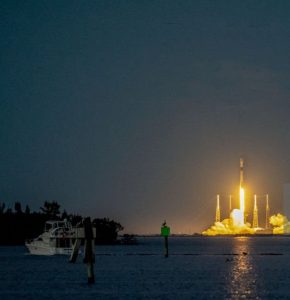How A Hurricane Tracker Helps Pilots
 In the dynamic and often unpredictable world of aviation, pilots rely heavily on weather data to ensure the safety of their flights. One of the most crucial weather phenomena that pilots must monitor is the hurricane, a powerful storm that can have devastating effects on both the ground and the sky. Hurricanes can create extreme turbulence, sudden wind shifts, low visibility, and dangerous flight conditions. In these situations, a hurricane tracker is an indispensable tool that aids pilots in navigating safely through or around the storm.
In the dynamic and often unpredictable world of aviation, pilots rely heavily on weather data to ensure the safety of their flights. One of the most crucial weather phenomena that pilots must monitor is the hurricane, a powerful storm that can have devastating effects on both the ground and the sky. Hurricanes can create extreme turbulence, sudden wind shifts, low visibility, and dangerous flight conditions. In these situations, a hurricane tracker is an indispensable tool that aids pilots in navigating safely through or around the storm.
A hurricane tracker is a technology that allows pilots, airlines, and meteorological agencies to monitor and track the path, intensity, and progression of hurricanes in real-time. By providing detailed information about the storm’s location, wind speeds, pressure levels, and expected trajectory, hurricane trackers help pilots make informed decisions about flight planning, route adjustments, and in-flight navigation. In this article, we will explore how a hurricane tracker contributes to flight safety, enhances pilots’ situational awareness, and supports broader aviation operations, ultimately helping to mitigate the risks posed by hurricanes in aviation.
Hurricanes tracker
Before delving into the role of a hurricane tracker, you need to understand the scale and impact of hurricanes on aviation. A hurricane is a large, organized system of clouds and thunderstorms featuring a clearly defined circulation pattern, most commonly occurring in tropical and subtropical regions. These storms can produce winds exceeding 74 mph, heavy rainfall, and storm surges, all of which can severely affect both aircraft and airport operations.
When a hurricane is imminent, the primary concerns for aviation are:
- Strong winds and turbulence: The high winds generated by hurricanes can create dangerous turbulence, both at high altitudes and near the ground. Strong crosswinds can make takeoffs and landings difficult, especially at airports located on the periphery of the storm’s path.
- Low visibility: Hurricanes often bring torrential rain, low clouds, and fog, which can drastically reduce visibility. This makes navigation difficult and increases the risk of accidents, especially when pilots are unable to rely on visual cues or instrument landing systems.
- Airport closures and delays: Airports in the path of a hurricane may close due to damage, flooding, or unsafe conditions, disrupting flight schedules. This creates challenges for airlines in managing route deviations, cancellations, and passenger safety.
- Flight route diversions: When a hurricane is present, pilots may need to divert their flights to avoid the storm. The unpredictability of hurricanes can make it difficult to determine the safest and most efficient flight path. The ability to monitor and adjust flight routes in real time becomes essential to maintaining safety.
Given these significant risks, it is clear why monitoring and tracking hurricanes is crucial to aviation safety. The advent of sophisticated hurricane trackers has become essential for pilots to navigate through or around these dangerous storms.
What is a hurricane tracker?
A hurricane tracker is a sophisticated weather monitoring tool used to track the formation, development, and movement of hurricanes. These trackers collect and process vast amounts of data from various sources, including satellite imagery, weather stations, radar, and aircraft reconnaissance flights. The information provided by a hurricane tracker is made available in real-time, offering critical insights into the storm’s location, wind speeds, pressure patterns, and expected trajectory.
Hurricane trackers display information in visual formats, including maps and graphics that show the storm’s current position, predicted path, and intensity. These tools are typically integrated with other weather monitoring systems, allowing meteorologists and pilots to assess the severity of the storm and anticipate any potential hazards along a flight route.
Some of the key data provided by a hurricane tracker includes:
- Storm location: The current position of the hurricane, usually displayed on a map, to help pilots understand its proximity to their flight path.
- Wind speeds: Hurricane trackers provide wind speed data, which is essential for pilots to gauge the potential turbulence and structural risks to the aircraft.
- Pressure levels: The storm’s central pressure is a key indicator of its strength. Lower pressure typically signifies a more intense storm, which pilots need to consider when planning routes.
- Projected path: Hurricane trackers show the forecasted path of the storm, giving pilots insights into where the storm is heading and when it is expected to reach certain areas.
- Flight restrictions and warnings: The tracker also provides real-time information on airspace closures, flight restrictions, or advisories issued by air traffic control and aviation authorities due to the presence of a hurricane.
Hurricane trackers help pilots navigate the skies
The role of a hurricane tracker in aviation is indispensable when it comes to ensuring flight safety and making informed decisions about flight paths. By providing real-time updates on storm conditions, hurricane trackers empower pilots to make the best choices for their flights. Let’s explore the various ways in which hurricane trackers assist pilots in navigating the skies during hurricane events.
1) Enabling precise route planning
When a hurricane is approaching or affecting a region, the ability to reroute flights is one of the most important tools for ensuring safety. Pilots rely on hurricane trackers to receive up-to-date information about the storm’s location and trajectory, which allows them to plan their flight routes to avoid the storm’s dangerous zones.
Using data from the tracker, flight planners can make real-time adjustments to flight plans, changing the route, altitude, and approach to avoid the hurricane’s core and surrounding weather hazards. This is particularly critical for long-haul flights or those transiting through hurricane-prone areas, such as the Caribbean, Gulf of Mexico, or the southeastern United States.
For example, if a flight is traveling from New York to Florida, and a hurricane is expected to pass through the state, the flight can be diverted around the storm’s path. The tracker provides pilots with the most current forecast, allowing them to determine the safest path to reach their destination without entering the storm’s dangerous region.
2) Monitoring turbulence and wind conditions
Turbulence is the biggest threat posed by hurricanes, and hurricane trackers provide critical data on the storm’s wind speeds, which are essential for assessing potential turbulence. By tracking the hurricane’s movement and intensity, pilots can anticipate areas where turbulence may occur and adjust their flight altitude or speed accordingly.
In some cases, pilots may choose to fly above or below the storm, depending on the altitude at which the turbulence is expected to be most intense. By providing real-time wind speed data and projected changes in wind patterns, the tracker helps pilots make these decisions to minimize the impact of turbulence on the flight.
Additionally, if strong crosswinds or gusts are predicted at airports near the storm’s path, pilots may need to adjust their landing approach or seek alternate airports. By utilising hurricane tracker data, pilots can evaluate wind conditions ahead of time and prepare for any necessary changes to their approach.
3) Ensuring situational awareness during the flight
Situational awareness is critical for pilots, particularly when navigating through potentially dangerous weather systems like hurricanes. A hurricane tracker enhances this awareness by providing pilots with continuous updates during the flight. Even if a hurricane is not directly in the flight path, nearby storm systems can still impact the aircraft’s flight conditions, including turbulence, wind shifts, and thunderstorms.
Hurricane trackers allow pilots to receive live information on the storm’s movement while in-flight. This means pilots can adjust their course, altitude, or speed as the situation evolves, avoiding sudden and potentially hazardous weather changes. For example, if a hurricane suddenly changes direction or intensifies during a flight, the tracker provides pilots with updated data that allows them to make timely decisions.
4) Reducing delays and improving airport operations
Airports and air traffic control centers rely on hurricane trackers to assess the storm’s impact on airport operations. If a hurricane is expected to reach a particular airport, trackers help airport authorities determine the level of impact and whether delays or closures are necessary. By tracking the storm’s projected path, authorities can make proactive decisions regarding runway closures, evacuation procedures, and the allocation of resources.
Pilots, in turn, receive information from the hurricane tracker that helps them anticipate any delays or changes in their flight schedule. If an airport is temporarily closed due to a hurricane, pilots can use the tracker to identify alternate airports where the flight may be diverted.
In cases where a flight has already landed, airport operations teams can use the tracker to determine the storm’s progression, helping them manage the safe disembarkation of passengers, refuelling, and re-routing of planes for the next leg of their journey.
5) Supporting early warnings and proactive decision-making
In addition to providing real-time data, hurricane trackers play an important role in early warning systems. By tracking the formation and development of hurricanes early on, pilots and airline operators are given advanced notice of potential storm threats. This allows them to make proactive decisions regarding route changes, cancellations, or diversions, minimizing the impact on flight operations and ensuring the safety of passengers and crew.
For example, if a hurricane is forming in the Atlantic Ocean and is projected to become a major storm, pilots and airlines can adjust their schedules and flight plans well in advance to avoid the storm’s path. The availability of this early warning information, combined with the hurricane tracker’s accurate forecast, ensures that pilots have enough time to make adjustments before the storm poses a threat to operations.
6) Real-time communication between pilots and meteorologists
The most significant benefit of a hurricane tracker is the enhanced communication it enables between pilots and meteorological teams. With continuous, real-time access to updated data from the hurricane tracker, pilots can stay in constant communication with weather experts on the ground. This allows pilots to clarify specific weather conditions, receive updates on changes in the storm’s path, and ask questions about turbulence or wind conditions.
The collaborative exchange of information ensures that pilots are always operating with the most current and accurate data available, enabling them to navigate safely and effectively through potentially hazardous weather situations.
Conclusion
Hurricane trackers are indispensable tools in modern aviation, providing pilots with essential data that helps them safely navigate through or around powerful storms. By enabling precise route planning, monitoring wind conditions and turbulence, improving situational awareness, reducing delays, and supporting early warnings, hurricane trackers play a key role in maintaining flight safety during hurricane events. As these systems continue to evolve and improve, the aviation industry will remain better equipped to handle the challenges posed by hurricanes, ensuring that passengers and crew can travel with confidence, even in the face of extreme weather conditions.










